Want to avoid changing your flat tire in not-so-desirable weather conditions like pouring down rain or that awful snow storm? Want to have peace of mind on the open road? Then Run Flat Tires are for you! The benefits are numerous and the safety standards high with Run Flat Tires, which have had a resurgence and increase in popularity as of late. As the name makes clear, they run flat, and are standard on nearly every BMW sold in America and on 12 percent of new vehicles. They are the solution for more and more drivers who place safety at the forefront….
Here’s what they are all about!
Flat tires can happen anywhere, often at the most inopportune time or place, leaving many people to call for roadside assistance. Changing a tire is an option, but what if there is no spare or you are uncertain how to use the tire repair kit? These are situations that occur more times than not.
Here’s where Run Flat, or zero-pressure, tires come into play. Not only can they support the weight of a vehicle for a short time, providing the driver with approximately 100 miles of range until they reach a repair shop, but they offer better stability after a blow out and a lower vehicle weight overall.
Main draw
The primary benefit of Run Flat Tires are that you can drive on them. They allow you to continue on your course, driving on a flat 100 miles after all the air is gone. Drivers need not exit their vehicle on busy roadways or not-so-desirable parts of town, but instead safely reduce their speed until they arrive at the location they need. Because this tire can support the vehicle for miles without air, a sudden deflation results in less weight transfer and tread destabilization. Above all, the steering and handling will remain near normal. The benefits don’t stop there. With the spare wheel and tire repair tools eliminated, your vehicle weight should also go down.
Time is limited
While driving on the Run Flat is its main benefit, there is a limit to this perk. You cannot drive on them indefinitely, and should check out your manufacturer’s specifications to find out both how fast and how far you can go.
There are two types of run flat tire systems, the self-supporting system and the support ring system. In the majority of self-supporting systems, the tire features reinforced sidewall construction that will continue supporting the vehicle in the event of air loss. With support ring systems, they employ a ring of hard rubber or another structure that can support the vehicle’s weight in an air loss condition. Only vehicles equipped with a Tire Pressure Monitoring System (TPMS) can perform with Run Flat Tires. The TPMS lets drivers know as soon as a pressure loss occurs. Without this alert, which is often the only indication, drivers may not know they are driving on an under-inflated tire. It is critical for safety that attention is paid to warnings of low tire pressure which all vehicles using Run Flat Tires must have.
In general, Run Flat Tires are pneumatic vehicle tires that resist the effects of deflation when punctured. They also ensure the vehicle and its steering control do not become immobile. They are meant to support the vehicle enough to maintain operable speeds in order to get out of the area or to a repair facility nearby.
How much do they cost?
Typically, Run Flat Tires cost about $200-$500 per tire for a passenger vehicle, or about 50-200 percent more than standard tires. The best benefit when it comes to cost comes from the fact that these tires can outlast several tire changes. It remains affixed to the wheel within the tire. It is peace of mind.
Consumers, who continue to rate safety high on their list of expected features, should still consider both the pros and cons of Run Flat Tires when weighing their decision and making that next purchase. Cost is often considered a “con” when it comes to this technology. In fact, drivers who rely on run-flats tend to replace their tires an average of 6,000 miles faster than standard tires. In addition, vehicles riding on run-flats are twice as likely to need to replace their tires after a flat or a blow out. That is because after they do their job, run-flats cannot be repaired.
In addition, vehicles riding on run-flats are twice as likely to need to replace their tires after a flat or a blow out. That is because after they do their job, run-flats cannot be repaired.
Other downsides include reduced fuel economy by about 1-2 percent; availability, as they are often hard to find and require specific configuration standards; and a decrease experienced by some in overall ride quality.
Despite these downsides, many manufacturers and drivers indicate that the safety and convenience of run-flats far outweigh both the cost and replacement issues. With increases in technology come an increase in run-flats usability. Most major manufacturers attach run-flat technology to their leading tires, thus reaffirming their trust in this technology.
How do they compare to a normal tire?
While early generations of run-flats were too heavy, too noisy and not durable, new run-feasts are tailored for a better ride. When compared to a regular tire, they are better equipped to handle tricky turns while deflated and when it comes to noise, fare much better.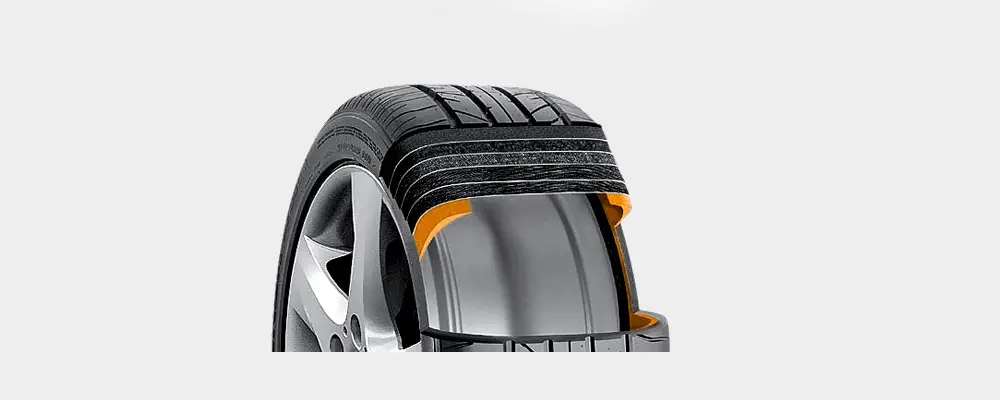 Drivers will not hear the “flap, flap, flap” of a typical flat with a run-flat.
Drivers will not hear the “flap, flap, flap” of a typical flat with a run-flat.
For many, run-flat tires rule, giving drivers an option they never had before. They are not only a good fit for the BMW experience, but becoming standard on many other vehicles. When something goes wrong, and it often does on the road, this is just one more way to ensure safety, comfort and overall customer service. While they are tried true in many aspects, there is still room for advancement. Performance-Oriented run-flat tires, options designed for electric and hybrid vehicles and fitments for the larger wheel sizes are just some of what lies ahead. See if run-flat tires are the option for you. Solid, secure and stable, they are ensuring that changing that pesky flat will be a thing of the past.
Posted in Akron BMW Service, Safety Tips | No Comments »
Run flat tires: Does this tire look flat to you? I couldn’t tell either, even when it was.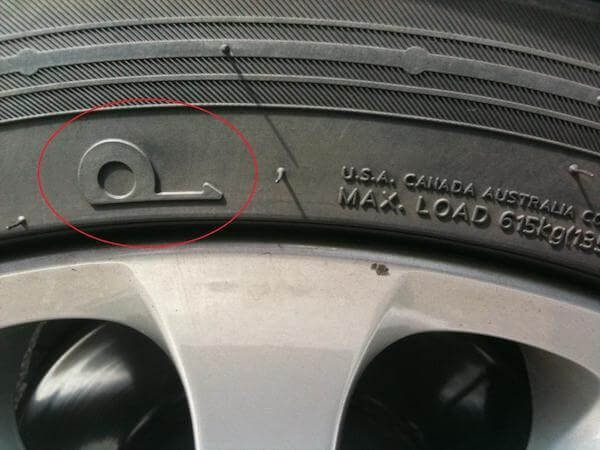
A really great thing happened to me recently: I had a flat tire.
Or rather, I didn’t have a flat tire, I had a damaged run flat tire. Because I have run flat tires on my car, it’s impossible to have a truly flat tire.
A Girls Guide to Cars may earn a commission from links contained on this page, but don’t worry, we only recommend products we love? And, there is no additional cost to the buyer when a purchase is made by clicking these links.
I first heard about run flats when I was thinking of buying my car, and this was a major selling point. Run flat tires don’t ever actually go flat. They are made of very stiff rubber and a very thin inner tube that when fully deflated, still can support the weight of the car. You can drive 100 miles or so on a flat tire, which means you never need to change a tire on the side of the road, you don’t have to call for roadside assistance and you don’t have to stop what you’re doing get the tire changed. You just drive your car to the tire dealer and have it taken care of.
You just drive your car to the tire dealer and have it taken care of.
I discovered I had a flat tire when the tire pressure monitor sensor went off. I reset it, according to the manufacturer’s instructions and it quickly came back on again.
A few days later, when I had time, I took the car to the car dealer. The tire was flat, I was told, and it would have to be replaced. So they replaced it. An hour, a cup of coffee and $250 later, I was on my way. While the tire was expensive and I could have gotten it cheaper if I’d gone to a tire store rather than the dealer, I was happy that I could have the tire changed at my convenience, I didn’t have to wait for a tow truck or roadside assistance, and I wasn’t left stranded by the experience.
Further reading: Our Continental run flat tire review
Make sure your tires are in good condition. Photo: Scotty Reiss
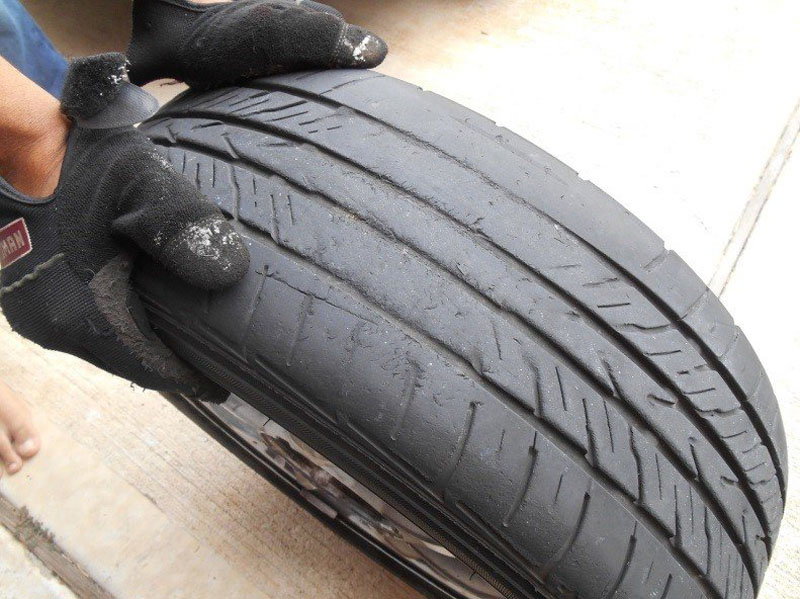
Run flats are more expensive than regular tires.
Partially because they are ‘performance’ tires designed for high end or performance cars, and partially because they are a smaller part of the market, they tend to be more expensive. Also, when you have a damaged run flat tire, you most likely will have to replace it; they can’t be patched or reused. However, I’ve never had a flat that I didn’t have to replace (isn’t that an urban myth?).
Run flat tires are also a rougher, louder ride. Every time you hit a pothole it feels as if you’ve hit a deer—it can be jarring and you’re sure you’ve done damage to your car (even though you most likely haven’t).
Further reading: Michelin is helping teens to learn about tire safety
Run flat tires are about to become more common. Tire companies, realizing that consumers like the idea of never having a flat tire, that most new cars are built with TPMS, or tire pressure monitoring sensors—necessary because you can’t tell that a run flat tire is flat by looking at it—and that shedding the cost and weight of a spare tire ($200 and 70 lbs!) saves money and fuel, they’ve stepped up product development..jpg)
Soon expect to hear about new run flats that are more comfortable to drive and less expensive. And, if you have an older car without a TPMS, you can still switch to run flats: A TPMS system can be purchased at an auto parts store for under $200.
Journalist, entrepreneur and mom, Scotty likes to say the automotive business found her, she didn't pursue it. But recognizing the opportunity to give voice to powerful female consumers and create a voice to match their spending power, her mission became to empower women as car buyers and owners. A career-long journalist, she has written for the New York Times, Town & Country, Adweek and co-authored the book Stew Leonard, My Story, a biography of the founder of the iconic grocery company Stew Leonard’s. Her love of cars started when her father insisted she learn to change the oil in her MG Midget, but now it mostly plays out in the many road trips taken with her family.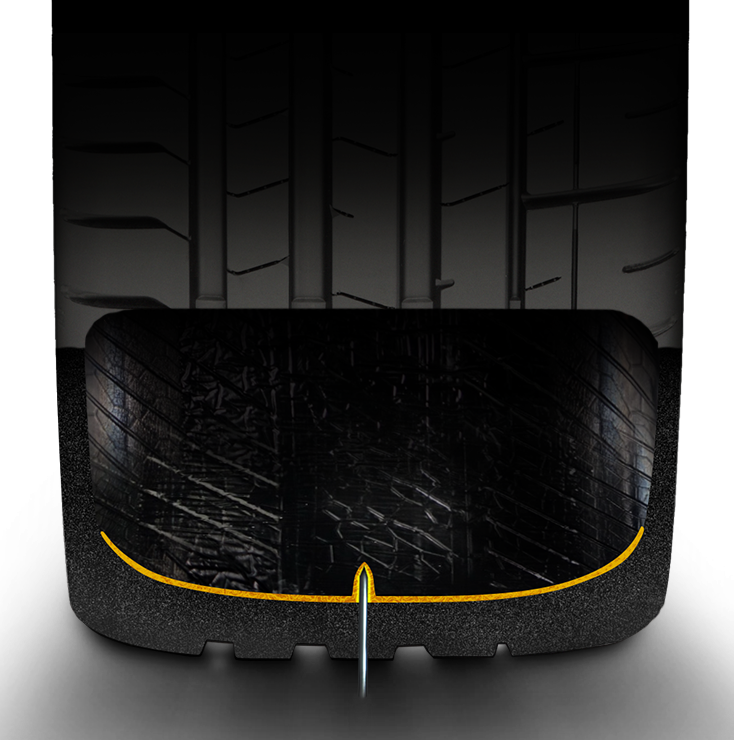
Konstantin Ishchenko
experienced car enthusiast
The motorist's budget is hit the hardest when you have to buy both summer and winter sets of tires within one year.
For example, the popular Nissan Qashqai is equipped with 225/45 R19 tires in the maximum configuration, a set of the middle price category will cost about 50,000 RUR.
But there is an option to save money and buy used tires. This article will tell you how to safely buy used tires and when you shouldn't.
Or the season has changed. We wrote in detail about how to assess the condition of tires and understand when they need to be changed in a separate instruction. Before you start looking for tires, it is important to be able to read their parameters. The most important in this situation are the size, manufacturer and model of the tire.
If the task is to buy a set of four tires, then it is important to respect the size. If you damaged one tire, you will have to look for exactly the same one: two wheels of the same axle must have tires with the same tread pattern, and this is possible only in the case of tires of the same model.
/save/koleso-hack/
How to save money on buying car tires and wheels?
Tire parameters important to look for: width, profile height and rim diameter Tire manufacturer and model According to Avtostat, an average car in Russia drives 17,500 km per year. Let's take the average wear resistance of tires according to the Treadwear index - 320 and calculate how long a new set of summer tires could theoretically last.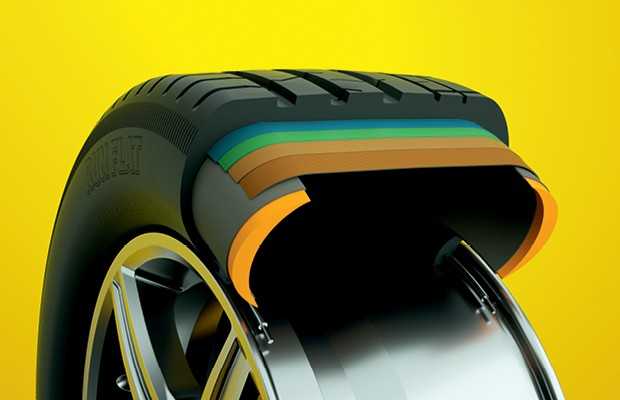
Every 100 index units is 12,500 km, which means tires are rated for 40,000 km. Assuming that the summer kit is used for 6 months out of 12, the mileage for six months is 8750 km, and the kit is enough for 4.5 seasons.
If the annual mileage is 30,000 km, then the summer kit should wear out in 2.7 seasons. But I have not met people who change tires in the middle of the season: either they change them in the spring, or they drive them until autumn.
Judging by Yandex Market, the average popular tire 205/55 R16 costs 5500 R, which means that the set is 22 000 R. Let's round up 2.7 to three full seasons. One season costs Rs. pay more than 14,000 R. How to evaluate the tread depth on a used tire, we will tell a little later.
/top-economic-cars/
11 economical cars for daily driving
These are very average values, but still usable. There is no perfect formula, operating conditions and driving style are very different.
Buying used tires will allow you not to get into a loan if a new set is too expensive. Or it will help those who know for sure that at the end of the season they will change the car: there is no point in buying new tires for the next driver. However, the theoretical calculation does not take into account your travel time for the next purchase and the risks of buying a bad kit. If you plan to drive a car for at least two years, buy new tires.
Velcro on stamped disc. A set of tires and wheels - 3000 R. I took it to change the car into it for the duration of a long body repair. It was a pity for me to leave the car on the expensive original casting. I had to spend two weeks searching, look through hundreds of ads and once go to the other end of the city. When the wheels are no longer needed, I plan to sell for 6000 R At first glance, selling tires is illogical. Tires need to be worn out completely and then disposed of, but the market for used rubber is huge. It has several types of sellers with very different offers.
It has several types of sellers with very different offers.
Companies that sell used tires from Europe and Japan. Despite the ban on the import of used rubber, which has been in effect in the Eurasian Customs Union since January 1, 2010, this business is booming. The main thing is to prove that tires are not hazardous waste and they are not imported for recycling. Therefore, on Avito and various sites, many offices offer used tires of various brands, sizes and models.
| Benefits | Defects |
|---|---|
| Huge selection of summer tires Advice available, professionals know their product Usually there is a tire service on site Safer online shopping. Many sell by bank transfer as a full-fledged online store Tire warranty until the first tire fitting, a defective tire will be changed to a good one or money will be returned | There is almost no choice of winter tires: no studded and little friction - Velcro.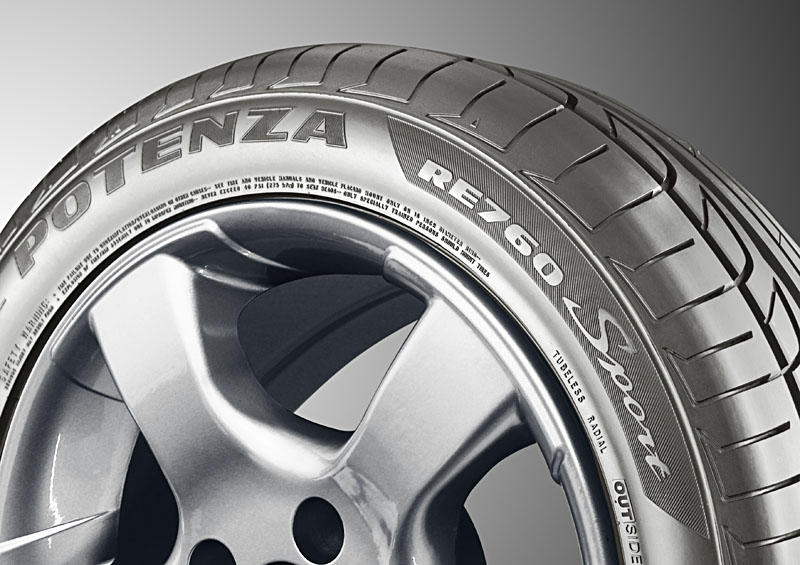 You can only buy "euro-winter" for mild climatic conditions. You can only buy "euro-winter" for mild climatic conditions. Consultation will not always be truthful and in the interests of the buyer. Everything is like on the market in the bad sense of the word Tires can be of the old year of manufacture |
Here are some of the advantages of specialized stores that sell used tires:
But there are also disadvantages:

Dealers and tire shops. They differ from the first ones in scale - they are much smaller, and also in that they trade at best on the scale of one city. Often the base for such activities is a tire shop. They buy cheaply at Avito or from tire fitting clients, sell more expensively at Avito or other tire fitting clients.
There are also not very pleasant scenarios: an unscrupulous tire fitting worker offers to dispose of a completely normal set of tires “out of friendship” and gets it for free. For another client, the same kit “very much nothing, two seasons will definitely pass” costs 15,000 rubles.
/save/garage-hack/
A typical tire shop that sells rubber for emergency replacement of a damaged tire.
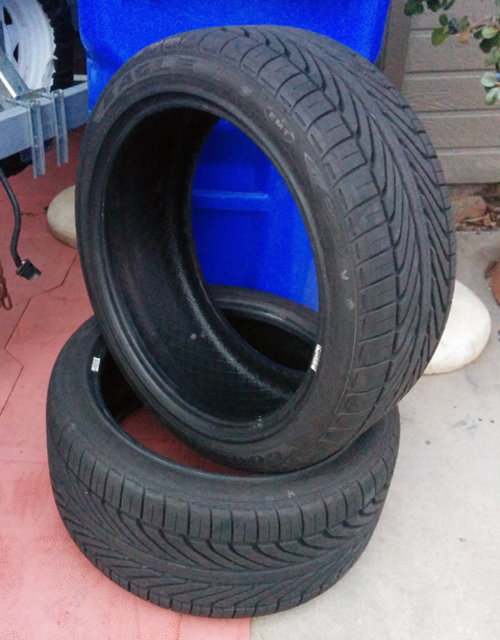 The choice is small, storage is not according to the rules: direct sunlight damages tires. But there are situations when there is no choice
The choice is small, storage is not according to the rules: direct sunlight damages tires. But there are situations when there is no choice Individuals who sell unwanted tires for a variety of reasons. Here are the main ones:
| Advantages of | Defects |
|---|---|
| You can search for tires by car make and model, not just size With a little luck, you can make a super bargain | It will take a long time and carefully to choose among ads Many do not know what they are selling (mistakes in tire names, sizes and models are normal) A rare seller agrees to tire fitting in his presence, everything will have to be checked by himself and by hand Many scammers: they can offer to leave an advance payment and disappear or send an erased kit instead of what is in the ad No warranty on tires |
Here are some of the benefits of buying used tires from individuals:
But there are also disadvantages:
Universal ad platforms: Avito, Yula and others.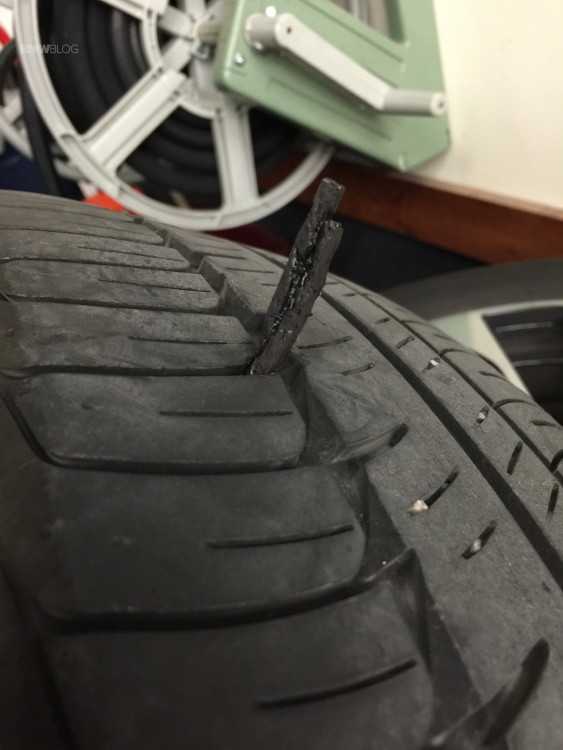 Here is the largest selection of used tires. Both private traders and professionals sell. Despite the convenient application and filters, it takes a lot of time to search. Don't expect every seller to list the model correctly. Bridgestone Potenza can become just "Bridge Stone" - and this is not the worst option.
Here is the largest selection of used tires. Both private traders and professionals sell. Despite the convenient application and filters, it takes a lot of time to search. Don't expect every seller to list the model correctly. Bridgestone Potenza can become just "Bridge Stone" - and this is not the worst option.
You will have to scroll through a huge number of ads with completely worn-out tires that are only suitable for recycling. Unfortunately, no filters will save you from this. Looking for tires on Avito is like looking for a treasure: you have to dig a lot, and no one guarantees a reward, but some are lucky.
/avito-fraud/
Avito: how to avoid scammers
Adjust the filter by size - so you will have more chances to find the tires you need You can no longer drive on such tires: they are worn out to the limit marks, this can be seen even in the photo. Plus, the sidewalls are very worn out. But the seller still thinks that he can get 3000 R for them Websites for car sales announcements: "Avto-ru" and "Drom". There are few private ads here, mainly specialized stores operate on such sites.
There are few private ads here, mainly specialized stores operate on such sites.
Droma has the largest selection of used wheels and tires from Japan in the country. Drome offers a good customer protection service and acts as a guarantor of purchase: if they send you worn or damaged tires, the site will return the money. If everything is fine, they will be transferred to the seller.
At the time of writing the article on Avto-ru, there were only five private ads for the sale of tires of the common size 205/50 R17 throughout Russia. It makes no sense to look for tires from private traders on this site. Source: Avto-ruCar club sites: forums, chats, Drive-2 — places where representatives of car clubs communicate. Sometimes it can be difficult to find the site itself. This can be a group on Vkontakte, a chat on Telegram or WhatsApp.
There are fewer offers here, but they are more interesting, more likely to find a good set. It is not customary to post completely junk for sale in communities or to greatly inflate the price: the ad will be discussed, criticized, or even deleted altogether.
But don't forget about safety. You should not buy something without verification or send the entire amount to a stranger in another city. It is usually customary to ask a friend of a teammate to go look at the kit and make sure that the tires are sent. Here, as a rule, you can place your ad on the purchase of the necessary tires and wait for responses.
There is a flea market on Drive-2. It is not very popular, but it is worth looking into it: there are filters separately for disks, wheels and tires, you can specify the dimensions.
/carservice/
How to save money on the operation of the car
Special online stores and car disassembly. In most cases, such sellers open an official representative office on Avito, but some sites are still working. They may have rare tires or a more interesting price. Large auto-dismantlers rarely sell tires - they mainly sell sets of wheels. The condition of the tires on the rims is most often mediocre: a car is not sent to scrap on good tires.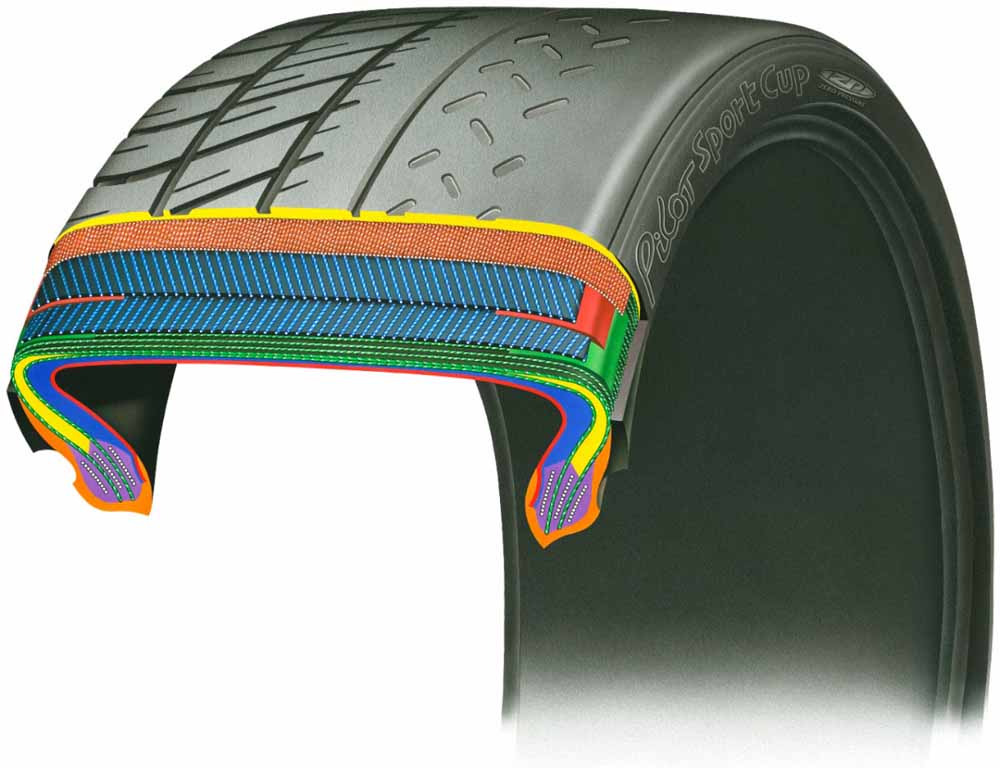
Tire shops and car services. It's hard to find interesting deals on tires here, it's not their business. Tires in a tire shop are usually bought in emergency cases: when one or more tires are damaged, but you need to somehow drive a couple of weeks to pay.
Price. Before buying used tires, it is better to check the price of new tires of the right size. Tires from young Chinese brands are very cheap, and the market for used tires is overheated and overpriced. It is impossible to unequivocally answer which is better: a new tire from an unknown manufacturer or a used tire from a well-known brand. But it is necessary to compare, study reviews and weigh everything.
At first glance, an excellent offer. A set of fresh tires 215/55 R17 with 20% wear for 18,000 R. But the indicated balance of 6 mm is about 30% wear. The remaining tread of the new tire is 8 mm, the tread limiter bar has a height of 1. 6 mm. The tire is worn 2 mm. Usable tread depth: 8 mm − 1.6 mm = 6.4 mm. 2mm from 6.4mm is 31% wear. Source: Avito But then it turns out that the new ones are very inexpensive. The remaining 6 mm is two-thirds of the tire resource, which means that buying such a kit costs no more than 16,000 R. Source: Yandex Market
6 mm. The tire is worn 2 mm. Usable tread depth: 8 mm − 1.6 mm = 6.4 mm. 2mm from 6.4mm is 31% wear. Source: Avito But then it turns out that the new ones are very inexpensive. The remaining 6 mm is two-thirds of the tire resource, which means that buying such a kit costs no more than 16,000 R. Source: Yandex Market Manufacturer, model, size, indices and other features. Be sure to check all tire specifications - everything that is indicated on the sidewall. The seller may not understand tires well or deliberately lie. Carefully inspect each tire. For example, you can accidentally buy a set of four tires, where three will be with runflat technology and one without it. If buying tires remotely, always ask for individual photos of each tire in full detail, or even better, a video.
Tire year. Among the advertisements of specialized stores, there are often tires that are more than 5 years old. Tires may have excellent tread residue, but it is better to refrain from such a purchase.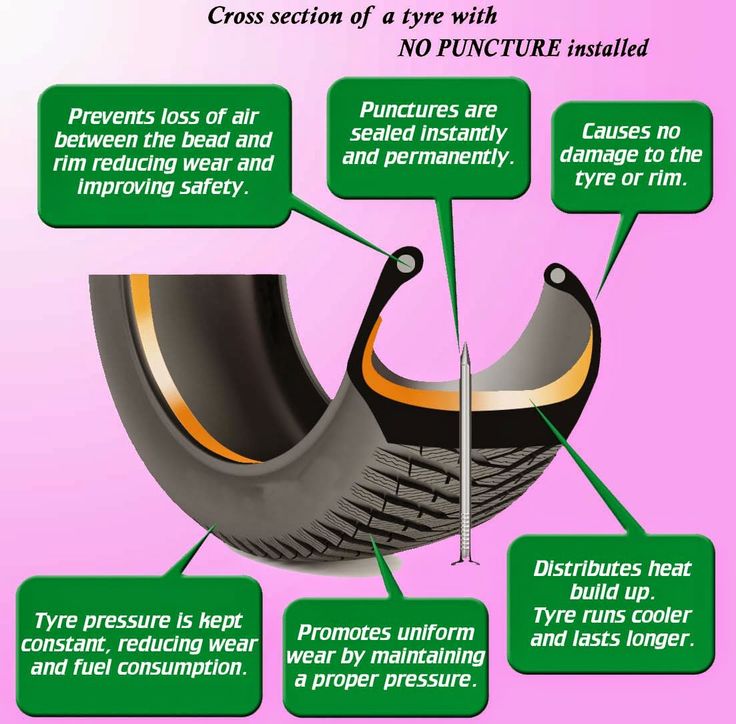 The older the tire, the worse its properties and the greater the chance of hidden damage: cracks, delaminations and ruptures.
The older the tire, the worse its properties and the greater the chance of hidden damage: cracks, delaminations and ruptures.
/wtf/bezkoles/
How online tire stores deceive car owners
The tire release marking always looks like this: the first two digits are the week of production, the second two are the yearTread depth. It is not necessary to measure the residual depth "by eye", it is better to buy a special device or use a caliper. The standard tread depth of new summer car tires is 7-8 mm, winter tires are 8-10 mm.
About tires that are long overdue for disposal, they wrote above: summer tires less than 4 mm or winter tires less than 5 mm should not be bought "for the season", it is not safe.
Digital Tread Depth Gauge is a simple and cheap instrument. It will help to accurately measure the residual tread depth and adjust the price of a set of tires. Source: Yandex Market Tread condition, damage and repairs.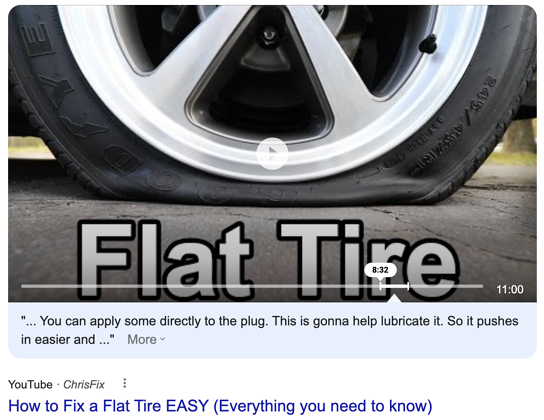 Do not buy tires with uneven tread wear. They will not be able to provide a complete drainage of water from the contact patch with the road, it is unsafe to ride on them. Severe cuts or even the absence of individual tread fragments will also be a reason to refuse a purchase. Without a specialist, you run the risk of buying a tire that you cannot use.
Do not buy tires with uneven tread wear. They will not be able to provide a complete drainage of water from the contact patch with the road, it is unsafe to ride on them. Severe cuts or even the absence of individual tread fragments will also be a reason to refuse a purchase. Without a specialist, you run the risk of buying a tire that you cannot use.
But do not be afraid of well-repaired punctures. Tires with patches on the inside of the tread part can be bought, this will not affect further operation. You should not buy tires on which punctures were repaired with a tourniquet.
/mini-jcw/
How much does it cost to own a Mini John Cooper Works
Obviously, this tire is no good: there is almost no tread, the studs are completely worn out. The central part is almost completely missing, and the sidewalls are less worn. Maybe the tire was pumped. Surprisingly, they also sell such Cracks and delaminations. Long longitudinal cracks, along the circumference of the tire on the sidewall or small cracks in the tread area - in any case, bad. Either such a tire was poorly stored, or it is very old. This is a particularly dangerous case, because such a tire can collapse while driving and cause a terrible accident. Cracks are not repaired, so you will have to refrain from buying.
Either such a tire was poorly stored, or it is very old. This is a particularly dangerous case, because such a tire can collapse while driving and cause a terrible accident. Cracks are not repaired, so you will have to refrain from buying.
Sidewall condition, damage and repairs. Hernias of any size, side cuts and patches on the side of the tire are good reasons to keep looking. You can't buy these tires.
Carefully inspect and feel the sidewalls of the tires. Unfortunately, not all defects can be found on a tire without a disk and without air inside. It will be ideal if you can mount tires on rims in a tire shop. Ask to balance the wheels and only then pay.
/guide/rezina/
How to choose tires for a car or crossover
If in doubt that the tires are intact, look for another option. Remember that it is the tires that connect your car and the road.
The surface adjacent to the rim may also be damaged on the tire. The photo shows the consequences of careless tire fitting of an old tire. I don't recommend buying this tire. If in doubt, and the offer is very interesting, ask the opinion of a tire fitting specialist
The photo shows the consequences of careless tire fitting of an old tire. I don't recommend buying this tire. If in doubt, and the offer is very interesting, ask the opinion of a tire fitting specialist Presence of spikes and their condition. It is not necessary to count every stud on a tire, it is difficult and time consuming. Just look at the tire: if it seems that there are about half of the studs on it or less, you do not need to buy a tire. Studded tires without studs won't get Velcro, so don't just look at the tread.
Studs on a tire that has already been driven for a couple of seasons look very different from new ones. They were worn off along the way, the seats were broken. In the background, you can see that the tire has already begun to lose studs. Even with sufficient tread, you can be left without spikes very quickly, it is better to look for another option Ads often offer used tires at an inflated price. We have made a special calculator that will help you calculate the fair value of tires, regardless of the manufacturer, technical parameters of tires and their number in the kit.
We have made a special calculator that will help you calculate the fair value of tires, regardless of the manufacturer, technical parameters of tires and their number in the kit.
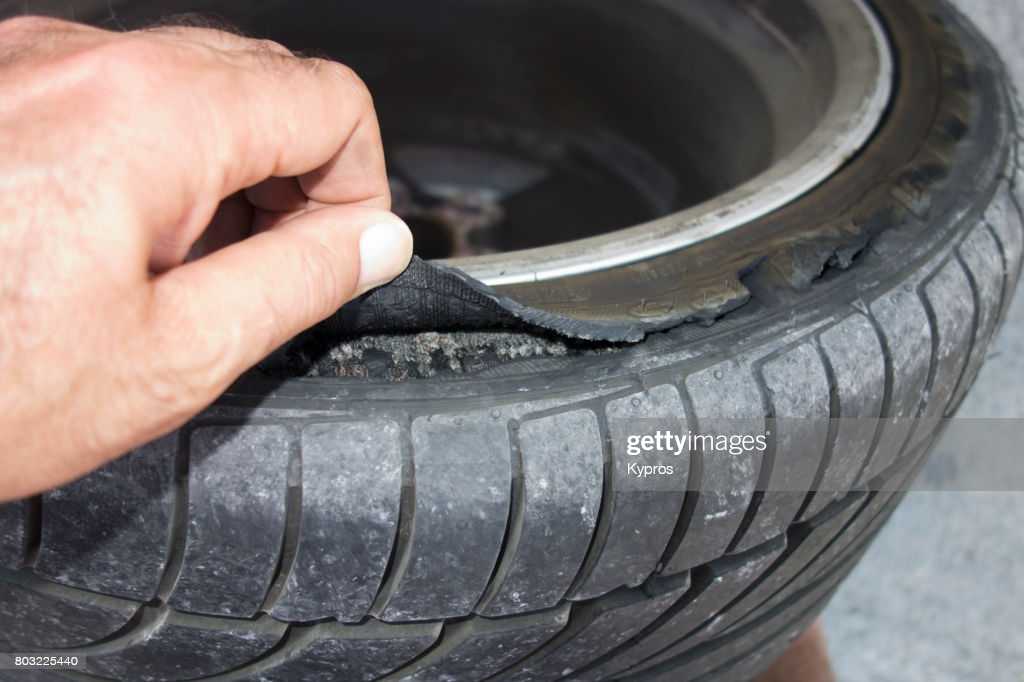
According to manufacturers, car tires should last up to 10 years, but this is the maximum period. The recommended service life of tires is no more than 5-6 years - in practice, after such a time, it is necessary to change the rubber, since it loses its consumer properties. This is very important, as is seasonal replacement, as worn tires greatly increase the risk of an accident, especially on wet or icy roads. Where you can confidently drive at a speed of 70–80 km/h on new tires, it is easy to lose control on worn tires already at 55–60 km/h. Therefore, every motorist needs to know about the service life of tires so that the operation of the car is not only comfortable, but also safe.
The specified service life of 5–6 years is rather arbitrary. More important is not the date of issue of rubber, but the degree of daily wear and mileage .
The main factor influencing tire life is vehicle type , which determines its load capacity. We are talking about what the maximum load a car can carry and whether its tires can withstand, which can be understood by their load capacity index.
Overloading the machine by 20% reduces the service life by 30%, so the vehicle must not be allowed to carry loads that exceed its carrying capacity.
In addition to the type of car, the list of factors affecting the service life of tires of any type includes:

It is necessary to control the optimal pressure in the tires of your car during all seasons.
Regarding the correct rearrangement of tires, we prepared a separate and detailed material, which you can read at the link.
Based on the list of influencing factors, we can conclude that reduces the life of tires:
Critical tire wear can be determined by special indicators that are carried out during tire production. These are transverse protrusions (lintels), reaching a height of 1.6 mm.
When the indicators become visible, the tire has begun to wear out.
Indicator location is indicated on the sidewall of the tire using the symbols in the shape of a triangle or the letters TWI meaning Tread Wear Indicator (i.e. "tread wear indicator").
Critical tire wear is indicated by:
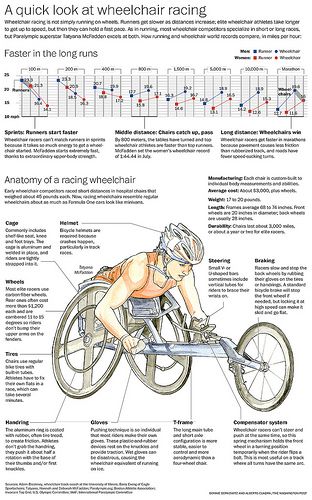
Summer and winter, passenger and truck tires have their own minimum residual tread depth, which is determined by wear indicators. You can measure this value with a special depth gauge: if it is below the set limit, then the rubber needs to be replaced.
Measuring is difficult due to uneven wear. In this case, it is necessary to determine the suitability of rubber in the area where wear is most pronounced . When the tread edge wears out on one side, we can talk about a violation of the camber-toe angle . In this case, you need to contact the service station.
Tires also have numbers that wear out as they wear, which also helps to determine its degree.
Learn more about the types of wear and what it can threaten to learn in the article.
The average load capacity of passenger cars is 2 tons , and the tire mileage is about 45 thousand km. Depending on the driving style, the characteristics of the car itself and the season, you can drive on passenger tires from 40 to 70 thousand km .
Depending on the driving style, the characteristics of the car itself and the season, you can drive on passenger tires from 40 to 70 thousand km .
Summer tires tend to last longer than winter tires because the operating conditions are less severe. All that summer tires can face on the road is high temperatures, hot or wet asphalt. The last to be determined is the safe value of the residual tread depth - for summer tires it is 1.6 mm . With a shallower groove depth, water drainage becomes impossible. Although the behavior of the tire on the road becomes unsafe already at a tread depth of about 3 mm.
Summer tires are more rigid than soft and elastic winter tires. The peculiarity of the composition and less difficult operating conditions explain the longer service life: an average of 5-6 years with careful driving on a flat roadway.
Winter tires are given much less time and almost always fail due to tread wear, because the tread of a new tire is 7-8 mm, and only 3-4 mm of working height remains.
In the case of studded tires, very few metal elements are retained with such wear, so it can no longer provide proper road safety.
Friction (not studded) tires with similar wear also lose most of their performance.
In reality, winter tires have an average mileage of not exceeding 30,000 km .
Some motorists decide to re-roll "bald" tires in the summer, but this is dangerous, because the grip on the heated road surface will be very low. So, the service life of winter tires differs depending on their type:Friction (so-called Velcro) with a quiet driving style without extreme wear, last up to 5 seasons . You can find detailed recommendations on choosing winter tires for your car here.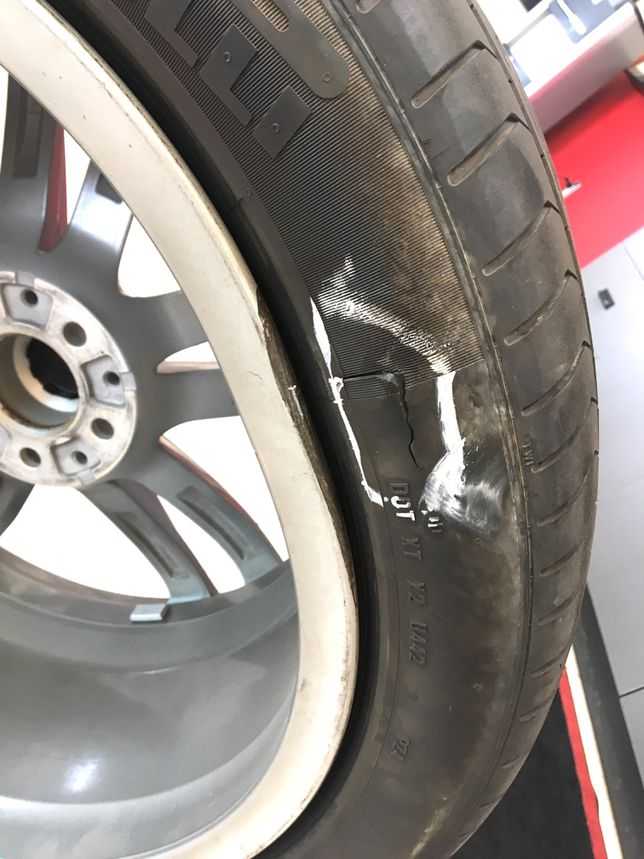
Tread depth for winter tires
The remaining tread depth for winter passenger tires is 4 mm . The value was chosen taking into account the fact that to ensure safe driving on winter roads: snowy, icy, covered with wet snow. In the latter case, a phenomenon akin to aquaplaning occurs - slashplaning, i.e. sliding on snow slush (slush), which occurs at speeds above 50 km / h. The wheels seem to "float" over the road at high speed.
The tread must have sufficient height to ensure that the slush is quickly removed from the contact area with the road. This is due to the fact that the thickness of the layer of wet snow can be several centimeters. Grooves that are too shallow just won't do the job.
It has also been proven that directional tread tires resist slashplaning better. The direction of rotation is usually indicated by an arrow and the word Rotation.
Light truck tires and tire life
Light truck tires are designed for light trucks, pickups, buses and light commercial vehicles, which have load capacity from 2 to 4 tons .
The average mileage of tires used on them is 60 thousand km . This is due to the fact that such tires belong to the category of commercial tires with a reinforced structure.
To prolong the life of your light truck tires, we recommend checking the pressure at least once a week, preferably every morning before driving. Measurements must be made on cold tires , i.e. not less than 3 hours after the end of the trip.
The choice of the correct size of tires depending on the season also helps to increase the resource: appropriate wide models are more suitable for summer, and winter and narrower ones are better in winter.Truck tires: differences and features of calculating the cost of a kilometer run (FKP)
Trucks have the largest load capacity - more than 4 tons . Accordingly, their rubber has the greatest resource, which is 65–70 thousand km . In this case, the residual tread depth is 1 mm .
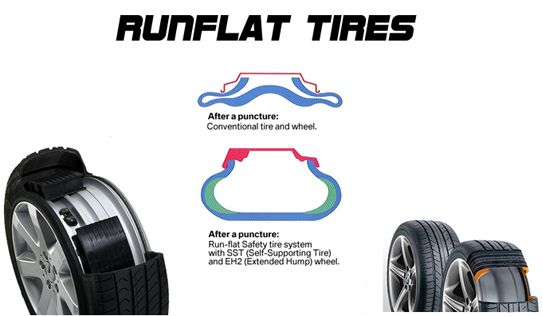
Increased wear resistance is due to the fact that truck tires are primarily designed for intensive use, often daily throughout the year. The decisive role in the service life of such tires is played by:
- Overloads and uneven weight distribution. The most common cause of accelerated wear, especially with regular high speed driving. Tires quickly deform, overheat, become covered with cracks, which in the end can even lead to a rupture.
- Aggressive driving style. Hard braking, fast acceleration and tight turns affect truck tires just as much as car tires, and sometimes even more, since such tires are subjected to more significant loads.
- Poor quality of roads. This problem is particularly acute for truck tires, since trucks often have to cross the whole country. This explains the importance of careful driving to help reduce the risk of tire damage.
The issue of service life for such tires is also important because it affects the cost per kilometer (CPC), which is important for evaluating the performance of rubber, optimizing fleet costs and determining the profitability of freight transportation.
Recall that the indicator is calculated according to the following formula:
UPC = (Tire cost + Maintenance costs - Carcass price) ÷ Mileage (km).From the formula it becomes clear: the higher the tire mileage, the lower the UPC, which means more profitable freight transportation. Therefore, companies conducting such activities seek to increase the resource of tires. This is possible by following the basic recommendations that are suitable for all tires:
- Check pressure.
- Do not drive aggressively.
- Be sure to pay attention to maintenance and driving style.
When choosing truck tires, you need to take into account the operating conditions of the truck and the category of goods transported, depending on what they buy:
- Trunk.
- Regional.
- Construction tires.
It also matters the type of axle where the tires will be installed: trailer tires cannot be placed on the steering axle due to the incorrect operation model and the load calculated by the manufacturer.
These actions can not only significantly reduce the life of the tires, but also be dangerous for driving on the roads.
It is equally important to follow the recommendations for driving, in particular, do not drive at high speed with a heavily loaded car, move smoothly, do not accelerate too quickly.
Tires for agricultural (agro) and special equipment
For agricultural machinery, tire life is just as important as for trucks.
The cost of operating rubber here reaches 20% of the total cost of per car. And during the service life of equipment , rubber has to be renewed 3-4 times .Due to the operation in difficult field conditions, tires for agricultural and special equipment have an increased resource. High wear resistance is provided by a multi-layer construction (6–24 layers) of the sole and sidewalls, reinforced reinforcement, a special tread compound and stiffeners.
But even with a special design, tires for agricultural machinery usually last less than for passenger cars - sometimes is less than 5 seasons , which is explained by difficult operating conditions.
To extend the service life, you must follow a number of rules:
- Select tires according to the soil on which the agricultural machinery operates. The wetter the ground, the higher the lugs should be. To work on soil with a high level of adhesion, lugs are needed, located as far apart as possible.
- Strictly adhere to the regulations for internal tire pressure depending on the load . At the same time, in additional tires it should be 0.02 MPa less than in the main ones.
When driving, pay attention to whether the car is pulling to one side. If this happens, then a swap is required.
- Eliminate long slip, hard braking, skid (slip). This increases the load on the rubber and reduces its life.
- Disengage front axle when driving on dry road. Proper use of the front axle not only reduces wear but also reduces fuel consumption.
Summary
- Tire life depends on many factors : from the type of rubber itself to the driving style of the driver.
